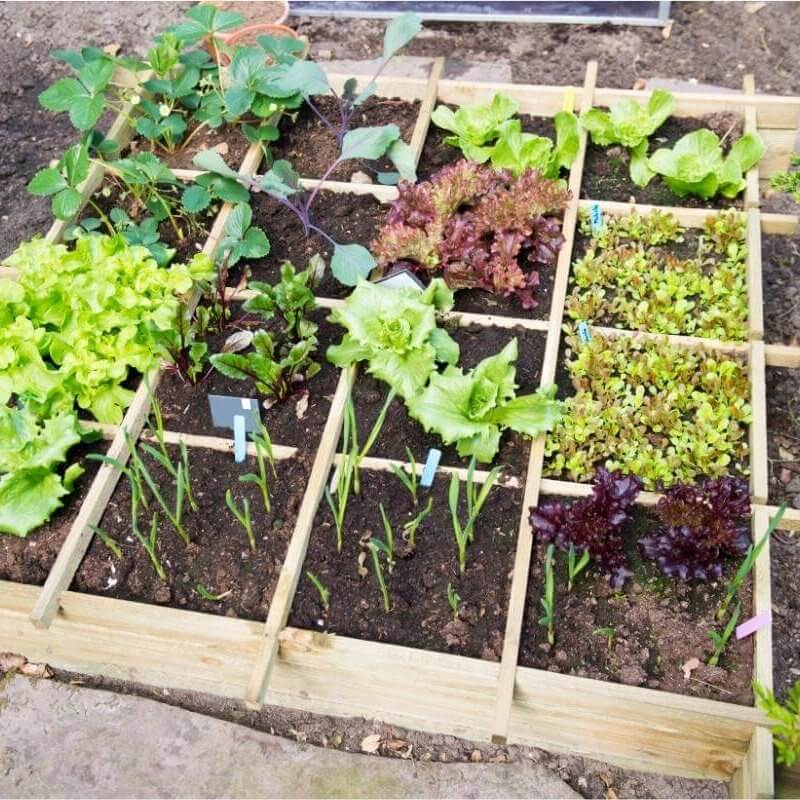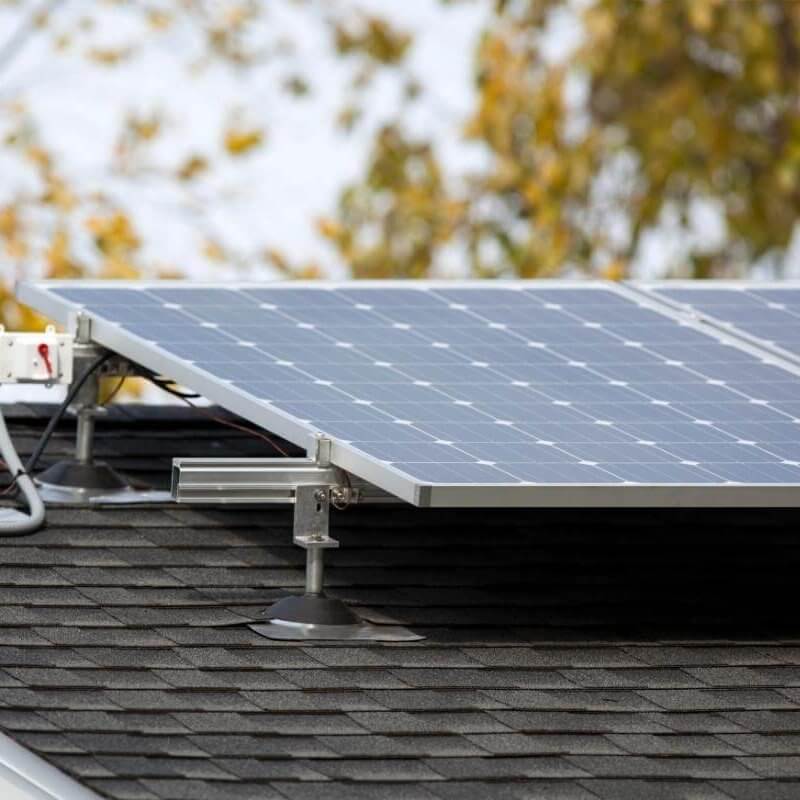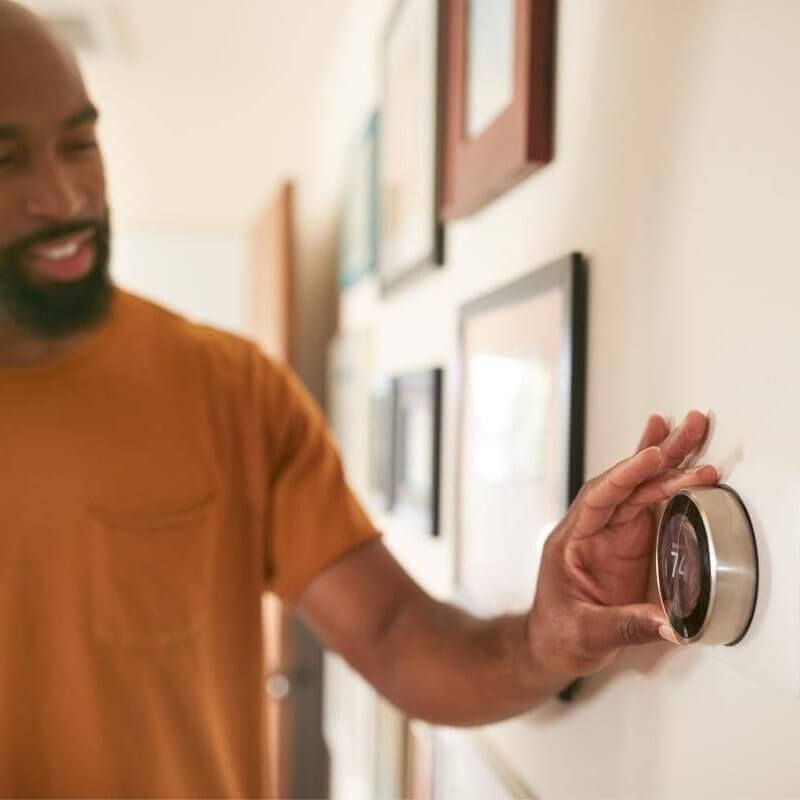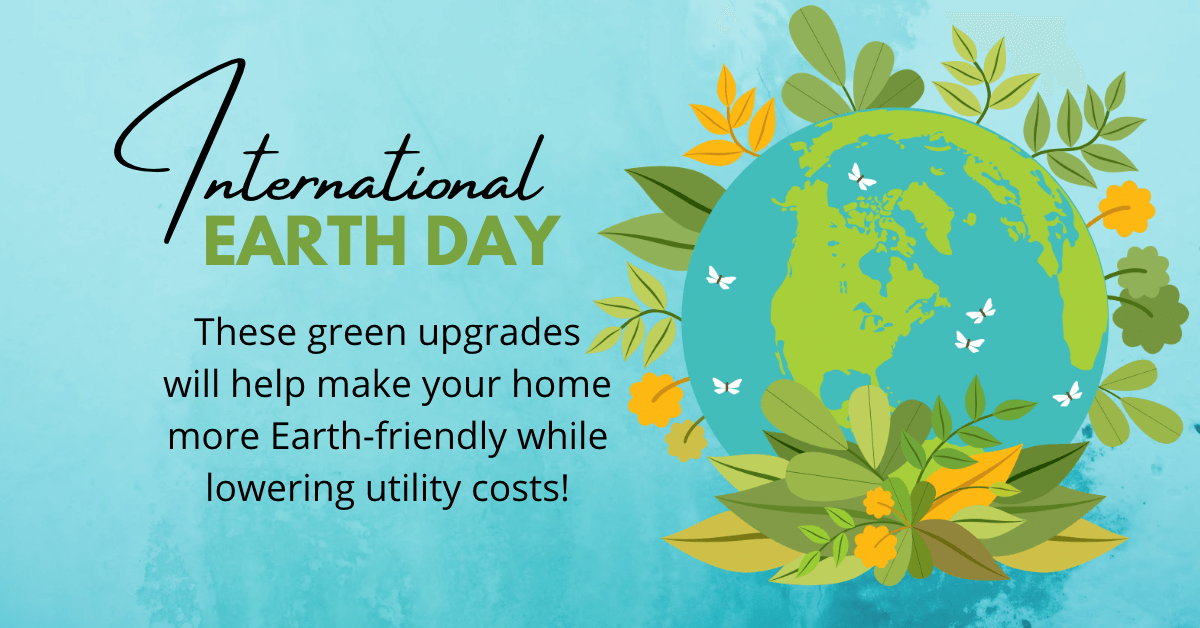It’s no secret – we’re in the midst of a global climate crisis threatening to reshape weather and our daily lives. In 2021, the United States – the second largest contributor to greenhouse gas emissions – added more than 5 billion tons of CO2 emissions into the atmosphere, with approximately 20% of that coming from household sources.
There is a dire need to lower our carbon dioxide emissions and make institutional changes to avoid the worst effects of climate change. The good news is that small changes in our day-to-day lives can lessen our contribution to climate change and make our homes and communities healthier. So, this Earth Day, we challenge you to adopt at least one of the following habits to make your home more energy efficient and, as an added benefit, lower your utility bills.
Grow More Food at Home
If you’ve got a balcony, backyard, or almost any sunny spot, then you’ve got a spot for a vegetable or herb garden! Growing food at home not only provides you with fresh, delicious produce but doing so has additional community health and happiness benefits.
- During photosynthesis, plants take in the greenhouse gas carbon dioxide from the atmosphere and release oxygen. We call that a win-win.
- Growing your food means fewer car trips to the grocery store, no plastic packaging or bags, and fewer fossil fuels burned to produce that head of broccoli.
- Unable to start your own home garden? Buying locally grown produce is another way to reap many of these environmental benefits while supporting your neighbors!

If you need help getting started, see if there are any nonprofit gardening organizations in your area. Many of these organizations provide classes, tools, and seeds to help you get your thumb green. For example, SPROUT NOLA is a New Orleans-based nonprofit that supports established and developing farmers in their community. Their Volunteer for Veggies program rewards volunteers with seeds for their gardens.
Install a Rain Barrel
Hearing that rain is in the forecast can affect you differently depending on where you live, but just about everyone can benefit from a rain barrel. A rain barrel is just that – a barrel for rain, but what you can do with that captured rain makes this tool special.
- Rain barrels provide a free, zero-chemical water source for your garden and other small water needs that can lower your monthly water bill.
- If you live in a flood-prone area, keeping some rainwater out of flood systems can reduce stress on the systems and help them work more efficiently. This can also help keep polluted stormwater runoff out of natural waterways.
- As climate change produces more droughts, rain barrels will be crucial for getting through water use restrictions. According to the EPA, rain barrels can save the average homeowner about 1,300 gallons of water in the summertime alone.

Like starting a home garden, one of the best ways to get started with a rain barrel is to see if any local organizations are available to help set you up. If you’re more of the DIY type, then this article will help you build your own!
Consider Going Solar
The idea of solar power as a low-carbon, renewable energy source is not new, but its benefits are just becoming accessible to more households. Solar energy is a near-infinite power source that can be leveraged to make our homes better Earth allies.
- Are you looking for an easy way to cut your annual emissions by thousands of pounds? The average residential solar system can reduce your household’s CO2 emissions by more than 15,000 pounds each year.
- Solar panels help you worry less about constantly rising electrical bills, saving households about $1,500 per year on energy bills.
- Get paid by your utility company for your residential solar system, thanks to net metering! Net metering credits solar system owners for the excess energy their systems produce that goes back into the electric grid.

Solar panels are an investment, but many government agencies and companies recognize the importance of scaling solar and are working to make it more accessible. In addition to more traditional financing, there are federal and local tax credits, incentives and grants that will make it easier for you to start to benefit from this important tool in the fight against climate change.
Incorporate Smart Home Devices
So many of our everyday household products now have features allowing them to run independently and simplify daily actions. They help us turn lights off when we forget and can lock doors from hundreds of miles away. They even help us make our homes more energy efficient.
- According to the US Department of Energy, smart appliances can save up to 15% of energy consumption and reduce greenhouse gas emissions by 9%.
- A smart thermostat can automatically adjust the temperature based on your schedule and the local weather, ensuring less energy is wasted on unnecessary heating and cooling. According to Google, their Nest Learning Thermostat saves homeowners, on average, 10% on heating and 15% on cooling, leading to a lower energy bill and decreased carbon emissions.
- Smart plugs and lighting help you reduce wasted electrical energy by allowing you to cut power with the touch of a button on your phone or a voice command to your virtual assistant.

A quick internet search will reveal many smart device and appliance options, but it’s essential to do your research. Check with your utility companies to see if they have any programs that provide free smart thermostats. For example, the company ecobee partners with some utility companies to offer its smart thermostat to customers for free.
Purchase an ENERGY STAR®-certified Manufactured Home
You know we had to do it! It’s easy to incorporate all these tips into your brand-new factory-built home. An ENERGY STAR®-certified home comes with ENERGY STAR appliances and upgrades like smart thermostats so you can start saving money and living greener on move-in day.
- Factory-built ENERGY STAR-certified homes can save you up to 30% on your monthly utility bills.
- The construction process for factory-built homes creates much less waste than that of site-built housing, which means less garbage piled up in landfills. Landfills produce methane gas, a greenhouse gas 84 times more potent than carbon dioxide and a massive contributor to climate change.
- Manufactured homes are great options for solar panels! In 2019, Next Step partnered with the City of San Bernadino and the local nonprofit organization Neighborhood Partnership Housing Services, Inc. (NPHS) to place ENERGY STAR®-rated manufactured homes in the city. The homes are outfitted with solar panels with the goal of making them net-zero energy homes. Learn more about these homes here.
Visit nextstepus.org to learn more about the energy efficiency of factory-built housing. We’ve also got information on how to start the buying process. Our Homebuyer Guide is a great place to start!
Manufactured housing can be a powerful ally in the global effort to lower carbon emissions and avoid the worst effects of climate change. Everything from its building processes to the finishing touches on a completed home helps reduce the carbon footprint of each home produced. From there, homeowners can take things a step further by incorporating devices, practices, or investments into their homes that reduce their climate and help them save money.
